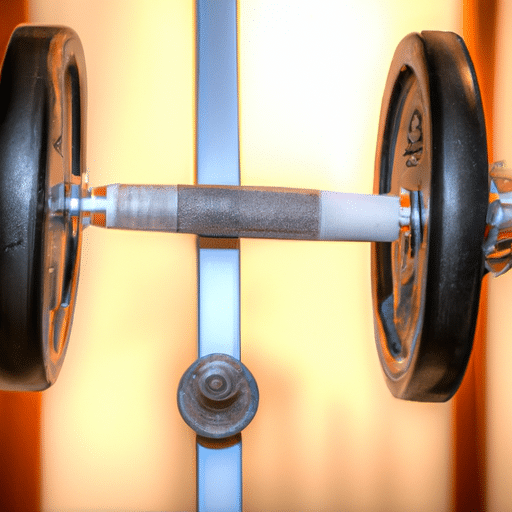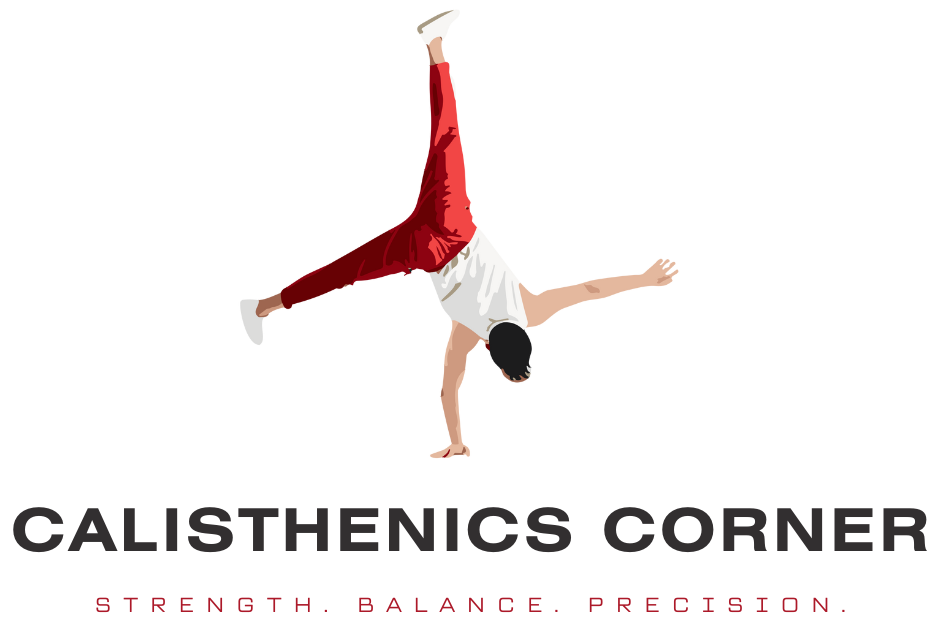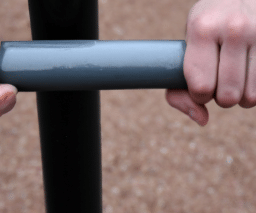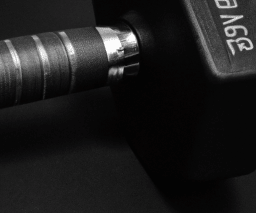Are you torn between bodybuilding and calisthenics, wondering which one is better for achieving your fitness goals? In this article, we will compare and contrast the two popular forms of exercise to help you make an informed decision. Whether your aim is to build muscle mass, enhance strength, or improve overall fitness, understanding the benefits and drawbacks of bodybuilding and calisthenics will provide valuable insights into finding the right workout routine for you. So, let’s delve into the world of fitness and explore the differences between bodybuilding and calisthenics to help you discover the perfect fit for your fitness journey.
Muscle Growth
Muscle growth is a key goal for many individuals who engage in physical fitness activities. Both bodybuilding and calisthenics provide opportunities for muscle growth, but they differ in their approach. Bodybuilding focuses on hypertrophy, or increasing the size of the muscles, through resistance training with weights and machines. Calisthenics, on the other hand, utilizes bodyweight exercises to build muscle strength and endurance.
Hormonal Response
When it comes to muscle growth, hormonal response plays a crucial role. Bodybuilding, with its emphasis on heavy weights and high-intensity training, triggers a hormonal response that promotes muscle growth. The intense workouts associated with bodybuilding stimulate the release of anabolic hormones like testosterone and growth hormone, which aid in muscle hypertrophy.
Calisthenics, while not as effective in stimulating the same magnitude of hormonal response as bodybuilding, still activates muscles and can lead to muscle growth. The bodyweight exercises in calisthenics engage multiple muscle groups simultaneously, which can be beneficial for overall muscle development.
Resistance Variability
Bodybuilding offers a wide range of resistance options, thanks to various equipment such as barbells, dumbbells, and weight machines. This versatility allows individuals to progressively overload their muscles, leading to muscle adaptation and growth over time. The ability to manipulate external resistance is a significant advantage of bodybuilding when it comes to muscle growth.
In contrast, calisthenics relies solely on bodyweight exercises, limiting the variability of resistance. However, calisthenics enthusiasts have found ways to increase the challenge by manipulating leverage, adding weight vests, or using resistance bands. While not as extensive as the options available in bodybuilding, calisthenics still offers room for progression and muscle growth through creative modifications.
Time Efficiency
Time is a valuable resource, and many individuals seek efficient workout methods that provide optimal results in a shorter period. Bodybuilding workouts often involve targeting specific muscle groups in each session, requiring dedicated time for each exercise. This focused approach to muscle growth can be time-consuming for those with busy schedules.
On the other hand, calisthenics workouts tend to be more time-efficient as they engage multiple muscle groups simultaneously. With compound movements like pull-ups, push-ups, and squats, calisthenics workouts can effectively target various muscles in a single exercise. This efficiency allows individuals to maximize their time while still achieving muscle growth.
Strength Development
Building strength is another aspect of physical fitness that both bodybuilding and calisthenics can address. However, they differ in their approach and the specific types of strength developed.
Exercise Specificity
Bodybuilding primarily focuses on developing muscular strength and size through lifting heavy weights. The exercises utilized in bodybuilding routines typically isolate specific muscle groups, allowing for targeted strength development. This specificity can be beneficial for individuals looking to excel in activities or sports that require concentrated muscle strength.
Calisthenics, on the other hand, emphasizes functional strength development. The bodyweight exercises involved in calisthenics often mimic real-life movements and engage multiple muscle groups simultaneously. These compound movements improve overall strength and coordination, making calisthenics an excellent choice for individuals seeking practical and functional strength.
Overall Strength
While bodybuilding primarily targets muscle strength and hypertrophy, calisthenics focuses on developing overall strength. Calisthenics exercises, such as pull-ups, push-ups, and handstand variations, require individuals to engage their entire body, promoting balanced development of both upper and lower body strength.
Bodybuilding, however, has the advantage of being able to target specific muscles more effectively. By isolating individual muscle groups, bodybuilders can achieve a higher level of strength in those areas. However, this specialization may come at the expense of overall body strength and coordination.
Functional Strength
Functional strength refers to the ability to perform everyday activities efficiently and safely. Calisthenics, with its emphasis on compound exercises and full-body engagement, promotes functional strength development. The movements performed in calisthenics mimic real-life actions like squatting, pushing, and pulling, improving overall body strength for practical use.
While bodybuilding can enhance muscle strength, the specific nature of the exercises may not directly transfer to functional strength. This is because bodybuilding exercises typically isolate certain muscle groups and do not necessarily mimic real-life movements. However, bodybuilding can still contribute to overall strength gains, which can indirectly improve functional tasks.
Flexibility and Mobility
Flexibility and mobility are essential components of physical fitness that contribute to overall well-being and performance in various activities. Both bodybuilding and calisthenics have certain impacts on these aspects, although they differ in their effects.
Joint Health
Proper joint health is crucial for overall physical functionality and injury prevention. Bodybuilding, with its focus on lifting heavy weights, can place stress on joints, particularly if performed incorrectly or with poor form. However, when performed safely and with proper technique, bodybuilding exercises can strengthen the muscles surrounding the joints, promoting joint stabilization and better overall joint health.
Calisthenics, on the other hand, can promote joint health by improving flexibility and mobility. The bodyweight exercises involved in calisthenics often require a greater range of motion, promoting joint flexibility. Additionally, calisthenics enhances joint stability as these exercises engage multiple muscle groups that work cooperatively to support the joints.
Range of Motion
Range of motion refers to the extent to which a joint can move freely in different directions. Both bodybuilding and calisthenics impact range of motion, albeit in different ways. Bodybuilding exercises tend to focus on muscle development, which may not necessarily prioritize optimal range of motion. However, incorporating proper stretching and mobility exercises alongside bodybuilding workouts can improve overall range of motion.
In contrast, calisthenics inherently promotes a broader range of motion due to the nature of bodyweight exercises. Movements like deep squats, full extension push-ups, and overhead presses in calisthenics require joints to move through a wide range, enhancing flexibility and mobility. This increased range of motion is particularly advantageous for activities that demand flexibility, such as gymnastics or yoga.
Muscular Balance
Muscular balance refers to the proportional strength and development of opposing muscles around a joint. Imbalances in muscular strength can lead to poor posture, decreased performance, and increased risk of injury. Bodybuilding, with its focus on specific muscle groups, may lead to imbalances if exercises are not carefully chosen and balanced.
Calisthenics, with its full-body engagement, promotes muscular balance as exercises often engage multiple muscle groups simultaneously. The compound movements involved in calisthenics help develop proportional strength throughout the body, reducing the likelihood of imbalances. Additionally, incorporating stretching and mobility exercises in calisthenics routines can further enhance muscular balance.
Cardiovascular Fitness
Cardiovascular fitness refers to the ability of the cardiovascular system to efficiently supply oxygen and nutrients to the working muscles during physical activity. Both bodybuilding and calisthenics can contribute to cardiovascular fitness, albeit with varying degrees of impact.
Aerobic Capacity
Aerobic capacity, also known as cardiovascular endurance, is a measure of how efficiently the cardiovascular system can deliver oxygen to the muscles during prolonged physical activity. Bodybuilding, with its emphasis on weightlifting and resistance training, may not directly target aerobic capacity. However, incorporating cardiovascular exercises like running, cycling, or swimming alongside bodybuilding workouts can enhance aerobic fitness.
Calisthenics, with its combination of resistance training and bodyweight exercises, inherently provides a cardiovascular challenge. Most calisthenics routines involve high-intensity circuits or interval training, which can significantly elevate heart rate and improve aerobic capacity. The continuous movement and elevated heart rate in calisthenics contribute to cardiovascular fitness.
Heart Health
Regular physical activity is crucial for maintaining heart health and reducing the risk of heart disease. Both bodybuilding and calisthenics can be effective in promoting heart health, although they differ in their approaches. Bodybuilding primarily focuses on muscle development, and while it may not directly target heart health, the cardiovascular component of accompanying aerobic exercises contributes positively to overall cardiovascular well-being.
On the other hand, calisthenics, with its high-intensity nature, actively stimulates the cardiovascular system. Elevated heart rate during calisthenics workouts promotes cardiovascular endurance and strengthens the heart muscle. This, coupled with proper nutrition and lifestyle habits, can improve heart health and reduce the risk of cardiovascular diseases.
Metabolic Benefits
Regular exercise, including both bodybuilding and calisthenics, provides metabolic benefits by improving the body’s ability to efficiently utilize nutrients and regulate metabolism. Bodybuilding workouts, particularly those with high-intensity resistance training, can lead to an increase in metabolic rate during and after exercise. This metabolic boost promotes calorie expenditure and fat loss, contributing to an overall improvement in metabolic health.
Calisthenics, with its combination of resistance training and cardiovascular components, offers similar metabolic benefits. The high-intensity nature of calisthenics workouts increases calorie expenditure and stimulates metabolic adaptations, supporting weight management and metabolic health. Additionally, the simultaneous engagement of multiple muscle groups in calisthenics workouts further enhances metabolic efficiency.
Weight Loss and Fat Burning
Weight loss and fat burning are common fitness goals for many individuals. Both bodybuilding and calisthenics can contribute to these objectives, although they differ in their approaches and effectiveness.
Caloric Expenditure
Caloric expenditure refers to the number of calories burned during physical activity. Bodybuilding workouts primarily focus on building muscle mass, which may not result in significant caloric expenditure during the actual exercise session. However, maintaining and building lean muscle mass through bodybuilding can indirectly contribute to weight loss and fat burning over time.
Calisthenics, with its combination of resistance training and cardiovascular exercises, are effective in burning calories and aiding in weight loss. The high-intensity nature of calisthenics workouts, particularly those involving circuits or interval training, can lead to a substantial caloric expenditure. The energy demand during calisthenics helps create a calorie deficit, which is essential for weight loss and fat burning.
Metabolic Rate
Metabolic rate refers to the rate at which the body burns calories at rest. Bodybuilding, with its emphasis on building muscle mass, can increase basal metabolic rate due to the higher energy demands of maintaining muscle tissue. As muscles are more metabolically active than fat, bodybuilding can help elevate resting metabolic rate, contributing to weight loss and fat burning even outside of exercise sessions.
Calisthenics, with its combination of resistance training and cardiovascular exercises, can also elevate metabolic rate. The high-intensity nature of calisthenics workouts stimulates metabolic adaptations, including an increase in resting metabolic rate. By promoting muscle growth and fat loss simultaneously, calisthenics can effectively contribute to weight loss efforts.
Body Composition
Body composition refers to the proportion of body fat versus lean muscle mass. Both bodybuilding and calisthenics can have positive effects on body composition, although they differ in their approaches. Bodybuilding primarily focuses on building muscle mass, which can contribute to a leaner and more defined physique by reducing body fat percentage.
Calisthenics, with its combination of resistance training and cardiovascular components, can also improve body composition. The high-intensity nature of calisthenics workouts stimulates muscle growth while promoting fat burning. The simultaneous engagement of multiple muscle groups in calisthenics exercises helps increase muscle tone and definition, resulting in a more favorable body composition.
Injury Risk
Injury prevention is a critical consideration when engaging in physical fitness activities. Both bodybuilding and calisthenics carry certain risks, and individuals should be aware of the potential impact on joints, overuse injuries, and the importance of balance and stability.
Impact on Joints
Bodybuilding, particularly with heavy weights and improper form, can place stress on joints. The repetitive nature of some exercises and the potential for heavy loads can lead to joint strain or injury if performed incorrectly. However, when executed with proper technique and supervised by a knowledgeable trainer, bodybuilding exercises can actually strengthen the muscles surrounding the joints, providing better joint stability and reducing the risk of injury.
Calisthenics, with its emphasis on bodyweight exercises, generally poses lower impact on joints. The inherent nature of bodyweight exercises allows for more controlled movements, reducing the potential strain on joints. However, individuals should still be mindful of proper form and technique to avoid excessive stress on joints during calisthenics workouts.
Overuse Injuries
Overuse injuries occur when the same muscles, tendons, or joints are repetitively stressed without ample rest and recovery time. Bodybuilding, particularly when individuals push their limits, can increase the risk of overuse injuries due to the high volume and intensity of training. It is essential to implement adequate rest days and recovery strategies to prevent overuse injuries in bodybuilding.
Calisthenics, with its focus on compound movements and full-body engagement, also carries the risk of overuse injuries. As with any physical activity, individuals should gradually progress and allow ample time for rest and recovery between workouts. Proper warm-up, cool-down, and stretching routines are essential to prevent overuse injuries in calisthenics.
Balance and Stability
Balance and stability are crucial for injury prevention and overall physical functionality. Bodybuilding exercises, with their focus on specific muscle groups, may not directly target balance and stability. However, incorporating exercises that engage stabilizer muscles, such as single-leg exercises or unilateral movements, can promote balance and stability alongside bodybuilding workouts.
Calisthenics, with its emphasis on full-body engagement during exercises, inherently promotes balance and stability. The compound movements involved in calisthenics require individuals to stabilize their bodies, engaging various muscle groups and core strength. This improved balance and stability are not only beneficial for injury prevention but also for daily activities and functionality.

Equipment and Cost
The equipment used in physical fitness activities plays a significant role in determining accessibility, convenience, and overall cost. Bodybuilding and calisthenics differ in terms of the necessary equipment, training options, and associated costs.
Gym Membership
Bodybuilding, with its reliance on weights and machines, often requires access to a gym facility. Gym memberships provide a wide range of equipment options, including free weights, weight machines, and cardiovascular machines, making it convenient for bodybuilders to access the necessary equipment for their workouts. However, gym memberships can come with a financial cost, and the availability of gyms may vary based on location.
Calisthenics, on the other hand, does not necessarily require a gym membership as bodyweight exercises can be performed anywhere. Calisthenics enthusiasts can benefit from free outdoor gym equipment, public parks, or even the comfort of their own homes. This flexibility makes calisthenics a more accessible and cost-effective option for individuals who prefer a less structured or equipment-dependent approach.
Home Workout Options
Bodybuilding workouts often rely on weights and machines, which may not be easily accessible for individuals who prefer to exercise at home. However, there are options for home-based bodybuilding workouts, such as investing in adjustable dumbbells, resistance bands, or weight machines. These home workout options provide convenience and flexibility, allowing individuals to engage in bodybuilding routines without the need for a gym membership.
Calisthenics, on the other hand, can be effectively performed at home without the need for specialized equipment. Bodyweight exercises, such as push-ups, squats, and lunges, can be modified to suit individual fitness levels and performed in the comfort of one’s own home. This accessibility, paired with the minimal equipment requirements, makes calisthenics an excellent choice for individuals looking for inexpensive home workout options.
Training Tools
Bodybuilding often requires the use of various training tools, such as barbells, dumbbells, weight machines, and resistance bands, to provide the necessary resistance for muscle growth. These training tools offer the versatility and progression challenges needed to continually stimulate muscle adaptation and growth. However, the cost of purchasing or accessing these training tools can vary, depending on the individual’s budget and gym facilities.
Calisthenics, with its reliance on bodyweight exercises, generally does not require specialized training tools. While resistance bands or weight vests can be used to increase the challenge, they are not essential for effective calisthenics workouts. The minimal equipment requirements of calisthenics make it a more accessible and cost-effective option compared to bodybuilding.
Variety and Adaptability
Variety and adaptability are essential for maintaining interest, progression, and long-term adherence to fitness activities. Both bodybuilding and calisthenics offer options for exercise variety and challenges, albeit in different ways.
Exercise Options
Bodybuilding routines often involve a wide range of exercises targeting specific muscle groups. This variety allows individuals to engage different muscles and create well-rounded workout routines. The availability of various exercise options, ranging from compound movements to isolation exercises, offers versatility and customization in bodybuilding workouts.
Calisthenics, with its focus on bodyweight exercises, also provides exercise variety. The range of movements available in calisthenics, including pull-ups, push-ups, handstands, and various progressions, allows individuals to target different muscle groups and achieve a comprehensive full-body workout. Additionally, calisthenics enthusiasts can incorporate creative modifications and advanced variations to continually challenge themselves and maintain variety in their routines.
Progression Challenges
Progression challenges are key in promoting ongoing muscle growth and development. Bodybuilding, with its variety of weights and machines, offers the ability to incrementally increase resistance, providing progressive overload to stimulate muscle adaptation. This versatility in resistance options enables individuals to continually challenge themselves and progress in their bodybuilding routines.
Calisthenics, although primarily relying on bodyweight exercises, still offers opportunities for progression challenges. Through modifications in leverage, tempo, or incorporating resistance bands or weight vests, individuals can effectively increase the difficulty and intensity of calisthenics exercises. The ability to continuously adapt and progress in calisthenics is crucial in stimulating muscle growth and achieving fitness goals.
Training Environment
The training environment can significantly impact an individual’s exercise experience and overall satisfaction. Bodybuilding workouts often take place in gym facilities, providing a dedicated space equipped with weights and machines. The gym environment offers a focused setting and access to a supportive community of like-minded individuals, which can enhance motivation and drive.
Calisthenics, on the other hand, offers more flexibility in terms of training environment. Bodyweight exercises can be performed indoors or outdoors, whether at a local park, in the comfort of one’s own home, or even during travel. This variety of training environments allows individuals to enjoy different settings and find motivation in their surroundings.
Competition and Goals
For some individuals, engaging in competitive events or setting specific goals can provide added motivation and a sense of achievement. Both bodybuilding and calisthenics offer avenues for competition and the pursuit of personal objectives.
Bodybuilding Competitions
Bodybuilding competitions provide individuals with the opportunity to showcase their physique and compete against others in terms of muscle development, symmetry, and overall presentation. These events involve strict requirements and judging criteria that focus on muscle size, definition, and proportion. Bodybuilders who aspire to compete can set specific training goals and tailor their workouts to meet the demands of competition criteria.
Calisthenics Events
Calisthenics events, such as street workout competitions or freestyle calisthenics showcases, allow individuals to demonstrate their strength, creativity, and mastery of bodyweight movements. These events often incorporate impressive tricks, dynamic movements, and technical skills. Calisthenics enthusiasts can set goals to improve their performance in specific movements or progressions, ultimately aiming to showcase their abilities in these events.
Personal Objectives
Not everyone seeks to compete in bodybuilding or calisthenics events, but individuals can still set personal objectives within these fitness disciplines. Bodybuilders may have goals focused on achieving a certain level of muscle mass or physique, while calisthenics enthusiasts may aim to achieve specific bodyweight movements or progressions. Setting personal objectives allows individuals to customize their training, monitor progress, and find fulfillment in reaching their fitness goals.
Safety and Accessibility
Ensuring safety and accessibility in physical fitness activities is essential to minimize the risk of injury and accommodate a wide range of individuals. Both bodybuilding and calisthenics have considerations regarding injury prevention, suitability for different populations, and the availability of social support.
Injury Prevention
Injury prevention should be a priority in any physical fitness activity. Bodybuilding and calisthenics share a common objective of reducing the risk of injuries. Proper form, technique, and appropriate training progression are crucial in minimizing the risk of injury in both disciplines.
Bodybuilding requires careful attention to proper lifting technique, appropriate warm-up and cool-down routines, and incorporating rest days for adequate recovery. Individuals should also prioritize joint health and engage in supportive exercises to minimize the risk of injury during bodybuilding workouts.
Similarly, calisthenics enthusiasts should focus on proper technique, gradually progress in difficulty, and prioritize rest and recovery to prevent injuries. Additionally, incorporating stretching and mobility exercises alongside calisthenics workouts can enhance flexibility and joint stability, further reducing the risk of injury.
Suitability for Different Populations
Physical fitness activities should be accessible and adaptable for individuals of varying fitness levels, ages, and abilities. Bodybuilding, with its emphasis on resistance training and weights, may require modifications for certain populations, particularly individuals with musculoskeletal conditions or mobility limitations. However, bodybuilding exercises can be tailored to accommodate different populations through appropriate exercise selection and modifications.
Calisthenics, with its focus on bodyweight exercises, offers greater accessibility for individuals of different fitness levels and abilities. The ability to modify exercises and progress at an individual’s own pace allows for inclusivity and adaptability in calisthenics. The scalability of calisthenics exercises makes it suitable for individuals of varying fitness levels, including beginners or those with physical limitations.
Social Support
The availability of social support can significantly impact an individual’s engagement and adherence to fitness activities. Bodybuilding, particularly when practiced in a gym setting, offers opportunities for social interaction, camaraderie, and access to knowledgeable trainers or peers who can provide guidance and motivation. The gym environment can foster a sense of community and accountability, enhancing the overall exercise experience for bodybuilders.
Calisthenics, although often performed individually, can also provide avenues for social support and community engagement. Online platforms and social media communities dedicated to calisthenics offer forums for individuals to share their progress, seek advice, and connect with like-minded enthusiasts. Participating in local calisthenics events or joining group training sessions can also provide opportunities for social interaction and support.
In conclusion, both bodybuilding and calisthenics offer unique benefits and considerations when it comes to muscle growth, strength development, flexibility and mobility, cardiovascular fitness, weight loss and fat burning, injury risk, equipment and cost, variety and adaptability, competition and goals, safety and accessibility. Choosing the appropriate fitness discipline depends on individual preferences, goals, and considerations. Ultimately, the most effective approach is one that aligns with an individual’s interests, encourages long-term adherence, and promotes overall physical well-being.








